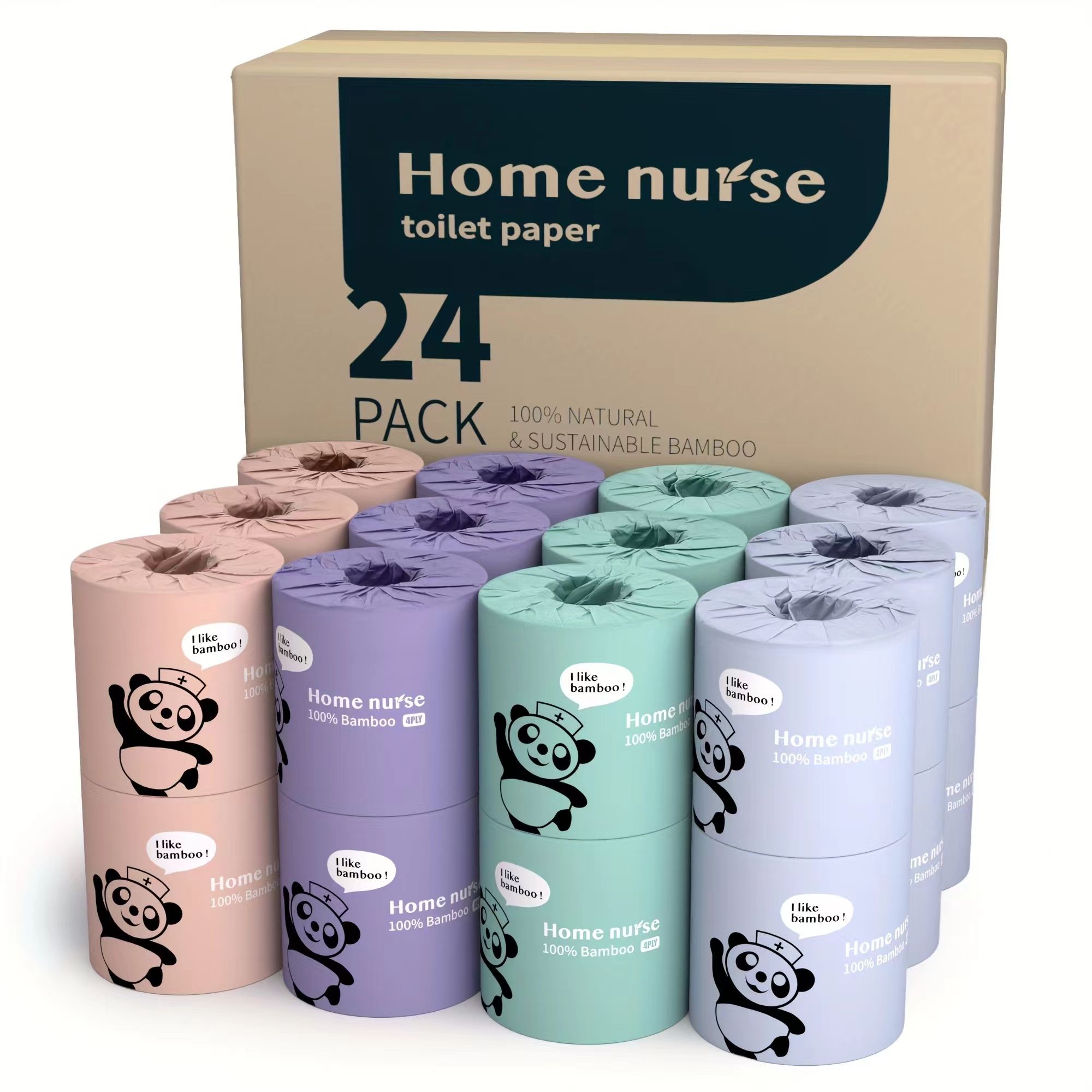
What is the difference between unbleached and bleached toilet paper? A battle between colour and quality in the world of tissue paper!
Posted on VIEW: 23630
Opening: The Colour Revolution in the Tissue World
Imagine standing in the tissue section of a supermarket, a sea of white in front of you, and then suddenly a natural beige colour comes into view. That's right, these are the two main characters we're going to talk about today - unbleached and bleached toilet paper. They are not only different in colour, but also a battle between environmental protection, health and softness.
Round 1: The Secret of Raw Materials
First of all, let's reveal the ‘origin’ of these two players.
Unbleached toilet paper usually uses bamboo pulp as its raw material. Bamboo, a fast-growing and highly sustainable plant, offers us an environmentally friendly and practical alternative.
Bleached toilet paper, on the other hand, is mostly sourced from wood pulp, which is whitened through a ‘whitewashing’ process that typically uses chemicals to bleach the pulp fibres of wood or recycled paper.
The process helps to improve the appearance of toilet paper, but raises health concerns due to the chemicals involved and their impact on the environment.
Round 2: The Battle of the Eco-Friendly
Next up, the PK of environmental protection.
Unbleached toilet paper is more environmentally friendly because no bleach is used, reducing the use and emission of chemicals in the production process.
Bleached toilet paper, on the other hand, uses bleaching agents such as chlorine and hypochlorite in the production process, which are not only potentially harmful to the environment, but can also produce the harmful substance dioxin. They can cause cancer, reproductive and developmental problems, interfere with hormones, and compromise the immune system.
Even if you don't directly ingest dioxins, they can still enter your body through skin contact. Therefore, for every piece of bleached toilet paper that people touch, they are exposed to dioxins.
There are several types of bleached toilet paper, each of which differs based on the bleaching process, including: elemental chlorine (EC), elemental chlorine free (ECF), chlorine free process (PCF), and totally chlorine free (TCF).

Although they look similar because they all contain chlorine, they are not identical. Each method of paper whitening has a different impact on the environment and human health.
Here's a quick primer:
1. What is elemental chlorine (EC) bleaching?
Elemental chlorine bleaching is a process in which pulp is bombarded with chlorine gas to remove its natural colour. This bleaching method may work wonders for whitening wood pulp, but it is harmful to human or planetary health. This method produces toxic by-products, including dioxins and furans. Dioxins are a group of chemically related compounds that are environmental pollutants and pose a significant risk to the environment and health.
Because of this, many paper manufacturers are switching to methods that are friendlier to the environment and safer for humans.
2. What is Elemental Chlorine Free (ECF) Bleaching?
Elemental Chlorine Free (ECF) bleaching is an advanced papermaking method that eliminates the chlorine component. ECF prefers the use of chlorine dioxide, which is a more environmentally friendly process.
Although chlorine dioxide has ‘diox’ in its name, it is not dioxin. Chlorine dioxide (ClO2) is a compound used for bleaching and disinfection. Chlorine dioxide is used because it is effective and has a lower environmental and health impact than other bleaching agents (if used properly).
According to the American Forest & Paper Association, it is used in 95% of pulp production worldwide. This means that the clean, white toilet paper you know and love could be coming from under or inside your cupboards.
Round 3: Softness versus strength
When it comes to the experience of using it, softness and strength cannot be ignored.
Some people think that unbleached toilet paper is softer, but actual tests show that the two are comparable in terms of softness. In terms of strength, unbleached toilet paper has a higher strength due to its unbleached, more complete fibre structure.
Special feature: The ‘green’ appeal of bamboo tissue
Now, let's talk about our shop speciality - unbleached bamboo tissue.
Unbleached toilet paper has a fresh, natural look, requires no bleach, and maintains a soft, off-white appearance - it's not bleached at all. It retains the natural colour of the paper fibres, usually brown, and is often considered one of the most environmentally friendly options as it avoids the use of bleaching chemicals altogether.
What are the different types of unbleached toilet paper?
Log unbleached toilet paper is made directly from logs. This paper retains its natural off-white or beige colour. Log pulp is usually lighter than recycled paper because it has not been previously processed or mixed with other materials or inks. This is a logical choice for those who prefer lighter colours without the use of bleached products.
Bamboo unbleached toilet paper is made from bamboo fibres, which are naturally lighter in colour than wood pulp. This paper can be left unbleached or processed using environmentally friendly methods such as hydrogen peroxide. Bamboo fibre tends to be closer to its natural light beige colour, making it an eco-friendly and softer option.
Not only does this toilet paper have the natural antibacterial properties of bamboo, but it is also more environmentally friendly in its use. Our bamboo pulp toilet paper, with its unique texture and eco-friendly concept, is gradually becoming a new favourite in the market.
Conclusion: Choose health, choose environmental protection
In this battle between ‘colour’ and ‘quality’, unbleached toilet paper seems to be better. It not only provides a healthy choice, but also contributes to environmental protection. By choosing our unbleached bamboo tissue, you are choosing a more natural and healthy lifestyle.
Call to Action
If you are interested in this green and healthy lifestyle, why not visit our independent website? Click here (https://www.homenurseshop.com/) to start your journey to a greener life and contribute to our planet!
Quick link
Get in touch
Describe discounts, promotions, or store details.


